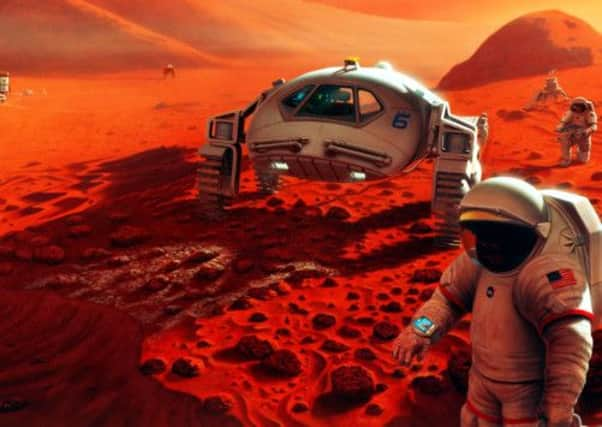Nutella and Spam: The diet of Mars astronauts


On the grounds that spacemen can’t pop out to the shops for oregano and fresh dill when they’re hundreds of thousands of miles from Earth, a research team was charged with preparing meals from a list of dehydrated, preserved foods.
The six researchers were based in a small dome and required to wear spacesuits each time they ventured out on to the northern slope of Mauna Loa, the active Hawaiian volcano which played the part of the Red Planet in the simulation.
Advertisement
Hide AdAdvertisement
Hide AdOn Tuesday, the group finally emerged from their mission to boldly go where no budding chef had ever gone before.
“It’s a moment I’m going to remember for the rest of my life,” said Oleg Abramov, a research space scientist at the US Geological Survey Astrogeology branch in Flagstaff, Arizona.
“Walking out … experiencing the sunshine and wind on our faces.”
The six researchers were recruited by the University of Hawaii and Cornell University for the Nasa-funded study to prepare meals from a list of non-perishable, dehydrated, preserved foods. They examined preprepared meals similar to those astronauts currently eat, and concocted meals themselves in a bid to combat malnourishment and food boredom.
Members did their cooking in a two-storey dome with small sleeping quarters, an exercise room and, of course, a kitchen.
Team commander Angelo Vermeulen said the problem with ingredients that are not perishable is they are usually highly processed and lack fibre, but he was impressed with how freeze-dried products tasted very similar to fresh produce.
However, what is also important for future space missions is comfort food, he said. A favourite among the crew was Nutella, the chocolate-hazelnut spread. “It’s something we craved,” he said. “We had a limited supply so we had to ration it.”
The study, dubbed Hawaii Space Exploration Analogue and Simulation, included an open call for recipes that involved a lot of Spam. The canned meat, popular in Hawaiian households, was a common ingredient in suggested recipes because of its shelf-life, said Kim Binsted, an associate professor and investigator on the study who did not live in the habitat.
Advertisement
Hide AdAdvertisement
Hide AdThe researchers prepared several dishes using Spam, including a Cajun jambalaya and a fried rice noodle dish.
Ms Binsted said Hawaii’s temperate weather and Mauna Loa’s geological features were a perfect setting for the study. The area is isolated, yet accessible, with no visible plant or animal life. “It looks like Mars,” she said.
Having emerged from the dome, team members will now spend several days in debriefings. They will likely be disoriented from the experience, Ms Binsted said, and they have requested a beach outing before returning to their regular lives.
One of the first things they did when they came out of the habitat was have a buffet breakfast. “They went straight to the fruits and vegetables,” Ms Binsted said. “They seemed delighted to have fresh fruits and vegetables.”
It will take several months to process all the data gathered. Ms Binsted hopes to present findings at the International Astronautical Congress later this year in Beijing.
On the menu
Breakfast
Spam’n’egg sandwich and Martian pancakes
Colourful crackers
French toast
Muffins
Lunch
Chicken and spinach enchilada soup
Spicy veggie sushi rolls
Split pea and
Spam soup
Dinner
Cajun-style Spam jambalaya
Oatmeal-thickened
beef stew
Thai red curry with
tofu and jasmine rice